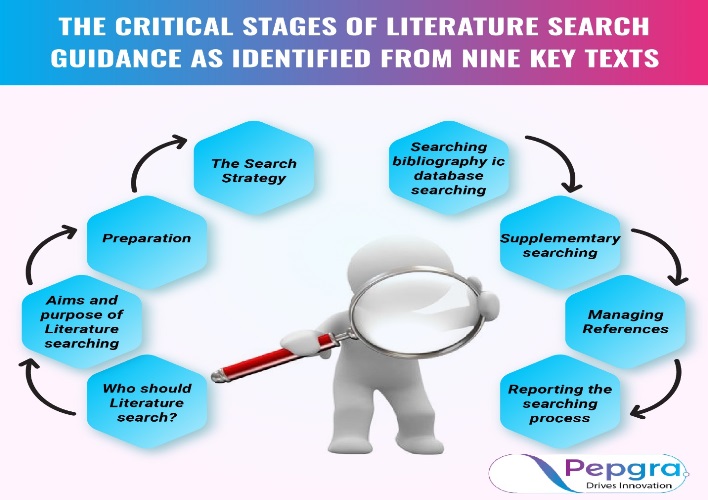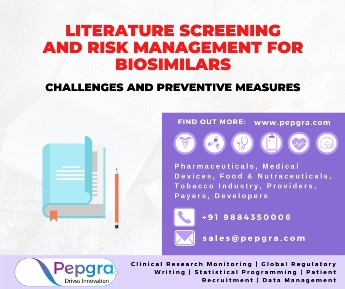In brief
Literature searching is generally accepted as an essential part of the literature review process. It entails a study search in the literature to produce a transparent report of study identification that informs readers about how studies were identified and how the review’s results fit into the relevant evidence. The goal of this study is whether a standard model of the Global and Local Literature Search Screening Services can be found in literature review guidance materials, and if so, how this process is represented in the advice and supported by research.
Introduction
A literature review.
The literature was divided into two categories: advice and published research. The Cochrane and Campbell Handbooks were among the nine guideline materials found. ‘Pearl growth,’ citation chasing, a PubMed search utilising the systematic and literature review regulatory services techniques filter, and the authors’ topic expertise were used to find published research.
After that, the essential portions of each guideline document were reviewed and re-read to identify crucial methodological phases. The steps of the methodology were recognised and specified. This information was analysed to find areas of common ground and regions where scientific writing services’ guide manuals differed. The selection of ‘important stages’ in literature searching was based on consensus across numerous guideline publications.
Identifying supporting studies
The authors wanted to create an evidence foundation of supporting research (henceforth referred to as “studies”) that contribute to current pharmacovigilance literature search service practice in addition to offering guidelines. The authors chose articles initially based on their expertise of the issue area and then by meticulous citation hunting of relevant studies found at each stage of the search procedure.
Table 1. The critical stages of literature search guidance as identified from nine key texts

Extracting the data
The relevant portions (chapters) on literature searching were reviewed and re-read to find critical methodological phases to disclose the implicit process of medical literature review searching inside each guiding document. A significant methodological stage was described as a discrete step in the entire process in which specific guidance is reported, and action is done, resulting in a finished literature monitoring service.
Search Strategies
We conducted two PubMed searches to find studies relevant to our research. The following is a description of how these searches were organised.
Search #1: The following search technique (no date restrictions, search date October 22, 2010) was used to find publications discussing approaches of priority setting:
(“Research”[Mesh] OR “Health Services Research”[Mesh]) AND (exercise[title/abstract] OR tool[title/abstract] OR tools[title/abstract] OR model[title/abstract] OR models[title/abstract] OR method[title/abstract] OR methods[title/abstract] OR “models, theoretical”[MeSH Terms] OR “costs and cost analysis”[MeSH Terms] OR “resource allocation”[MeSH Terms] OR “investments/economics”[Mesh Terms]) AND (“health priorities”[MeSH Terms] OR “priority setting”[title/abstract] OR “research priorities”[title/abstract] OR “research priority”[title/abstract])
Search #2: The following search method (no date limitations, search date December 1, 2010) was used to find publications particularly addressing VOI:
“value of information”[title/abstract] AND ((“Decision Making”[Mesh] OR “Decision Theory”[Mesh]) OR (“Research”[Mesh] OR “Health Services Research”[Mesh]) OR research[title/abstract])”
Limitations
The concentration on recommendations provided in Europe and Australia may be a possible restriction of these local literature review services. In the section “Identifying guidance,” we decided to choose nine of the nine advice documents analysed in this literature analysis. In summary, these nine guidance documents were selected as the most significant healthcare guidance that informs systematic and literature-reviewing practice, given its prominence in the science of health-information retrieval.
Conclusion
The presence of a shared model of the literature searching process in systematic reviews appears to be demonstrated by this literature review. This methodology is referred to as “the typical approach” since it appears prevalent in nine separate guidance manuals. The data described above show eight essential steps in conducting a systematic reviews literature searches, and these key stages are consistently documented in guidance papers, implying that the key scenes are well-understood.
About Pepgra
Pepgra offers pharmacovigilance Literature review search services as part of the drug safety and efficacy services. Our medical regulatory staff has extensive experience in searching for published articles from multiple databases and can comprehensively cost-effectively manage your literature screening requirement in conjunction with writing periodic safety reports. We perform the literature search for aggregate reports, benefit-risk analyses, signal evaluation, or ongoing screening as required by local and regional requirements. We can conduct literature screening as per your requirement in local territories.
References
- Cooper, C., Booth, A., Varley-Campbell, J. et al.Defining the process to literature searching in systematic reviews: a literature review of guidance and supporting studies. BMC Med Res Methodol 18, 85 (2018). https://doi.org/10.1186/s12874-018-0545-3
- Myers E, Sanders GD, Ravi D, et al. Evaluating the Potential Use of Modeling and Value-of-Information Analysis for Future Research Prioritization Within the Evidence-Based Practice Center Program [Internet]. Rockville (MD): Agency for Healthcare Research and Quality (US); 2011 Jun.





